- Get an overview sense of the course material
- Become familiar with building a website using the wordpress tool
- Practice using the internet as a source for needed information
You may work in groups or alone as it suits you. Instructors will be roaming the room to help you with any questions you might have about the material or website development.
Chapter 1: Starting Permaculture
see chapter 1Give an example of a system that you interact with in your daily life:
Following the examples below, describe the elements, principles, and goal of the system you chose
- In art, one might arrange elements called shapes, lines and colors; according to principles of visual design; in order to communicate a thought through a painting.
- In dance, one might arrange elements called movement, time, and space; according to principles of choreography; in order to communicate a feeling through a performance.
- In chemistry, one might arrange elements called heat, chemicals, time, and sequence; according to the principles of science; in order to gain understanding through an experiment.
- In society, one might arrange elements called resources, consumers, producers, and banks; according to principles of capitalism; in order to distribute goods through an economy.
- In a university, one might arrange elements called teachers, students, administration, and facilities; according to principles of liberal arts; in order to produce learning though education.
Chapter 2: Permaculture’s Ethical Underpinnings
see chapter 2The permaculture values are just one of many different ways to describe how social and personal attitudes correlate to sustainability. Holmgren has created a graphic to illustrate the idea that, in order to achieve a “permanent culture,” these values must be at the center and drive behavior across cultural domains.
Find three other graphics that describe the same idea and insert them below.
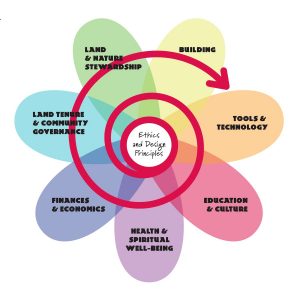
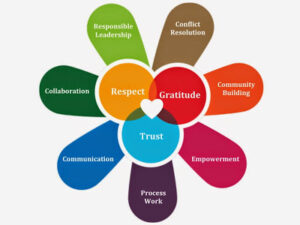

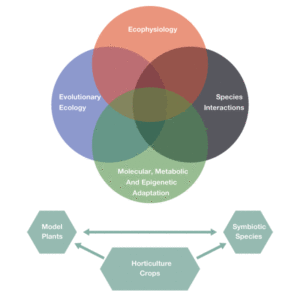
Chapter 3: Ecology: Life’s Networks
see chapter 3Using one of the calculators found online, calculate your ecological footprint. Include a link to your calculator along with a screen-shot image of the sites calculation using your information.

Chapter 4: The Wonder of Water
see chapter 4How much water do you use in a day?
- Personal: 1,516 gal/day.
How many gallons does that add up to in a year?
- 553,340 gal/year.
How many inches of rain fall each year in your area?
- 42 inches of rain a year
What size roof would you need to capture the amount of water you need? (hint: online calculators are helpful!)
- Roof Size – 21,282
Chapter 5: Climates and Microclimates
Chapter 18 Other Cultures and Places
see chapter 5, 18What is the USDA hardness zone of Forest Grove Oregon?
- 8b
What is the average last frost date?
- April 26th
What is the average first frost date?
- October 19th
What are the average high and low temperatures?
- High – 82
- Low – 54
How many inches of rainfall does Forest Grove get every year?
- 42 inches
Using the chart below, compare the climate of a tropical city of your choice with that of Forest Grove
| Temperate (Forest Grove) | Tropical (city name) | |
|---|---|---|
| Average high and low temps | ||
| First and last frost dates | ||
| Annual precipitation | ||
| Precipitation pattern | ||
| Longest and shortest day |
Chapter 10: Developing your Design Methods
see chapter 10Search “images” for “permaculture sector analysis” and “permaculture zone analysis” Insert 3 images of each below. (or create a slideshow and insert it below)
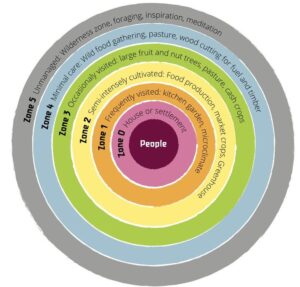
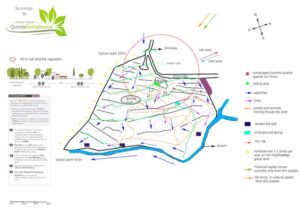
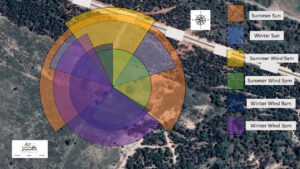
Chapter 11: How and Where we Live: Zone 0
see chapter 11Go through the table on pages 117-118. Select three house problems that you have experienced in a house you’ve lived in and list two strategies from the list that you’d be interested in trying at your home. In addition to the strategies from the book, come up with a third strategy from your own thinking.
- Plants Overgrowing and taking over – solutions, taking cuttings and propagations.
- Plants not being properly fertilized and struggling for a good consistent water source – Aquaponics
| House Problem | 1st strategy from the list | 2nd strategy from the list | Strategy from your own thinking | |
|---|---|---|---|---|
| 1 | ||||
| 2 | ||||
| 3 |
Design activity
Chapter 12: Your Garden
Chapter 13: The Food Forest
Chapter 14: The Birds and Bees
see chapter 12,13,14One of the fundamental understandings of this class is the notion that different goals lead to different results. In this assignment, you will start from the same base information and come up with different designs based on the 2 different goals listed below. Using the downloadable “earth base map” provided at the bottom of this page, create 2 different designs using the goals below:
- a food-producing landscape for humans
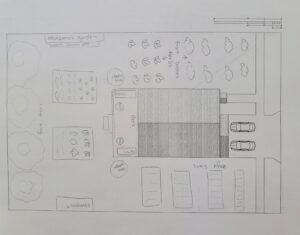
- a supportive habitat for chickens and bees.
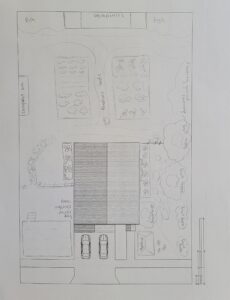
Scan your images or make a slideshow and insert it below:
Chapter 15: If You are Farming
see chapter 15If you had land, how would you use that land to provide an income for yourself? List three products you think would be interesting to produce for exchange or sale. Estimate the income you’d expect to make from selling/bartering each of those products and the time you’d need to make them. Draw a map of a 10 acre farm and locate the resources you need to produce your product on the map.
| Product | Resources Needed | Income Generated | Hours/day for production | |
|---|---|---|---|---|
| 1: Chickens | Eggs | Chicken coop Chicken Feed | 150 week based off 10 chickens | 3hrs a day |
| 2: Bees | Honey | Bee Hive | 100 pounds of honey per year | 5 hrs |
| 3: Produce | Veggies and fruit | Acres time Water | 30,000K per year | 5hrs |
Insert site map below:
Chapter 16: Harvest Forests
Chapter 17: Natural Conservation Forests
see chapter 16,17Make a list of 3 plants that grow in forests that interest you. List at least three potential outputs for each of those plants.
| Species | Output 1 | Output 2 | Output 3 | |
|---|---|---|---|---|
| 1 | ||||
| 2 | ||||
| 3 |
List three functions of a natural forest.
Function 1
Function 2
Function 3
How is a conservation forest different from a harvest forest?
Chapter 25: Money Matters
see chapter 25In the chart below, list five of your assets according to the four types described on pages 245-6 in the book: degenerative, regenerative, procreative, and informational.
How rich are you according to this classification?
| Asset | Degenerative | Regenerative | Procreative | Informational | |
|---|---|---|---|---|---|
| 1 | |||||
| 2 | |||||
| 3 | |||||
| 4 | |||||
| 5 |
Chapter 26: A Sense of Place
see chapter 26For each category, list the assets we already have in place in our bioregion. Also list assets that we should have but don’t.
| Food | Water | Energy | Shelter | |||||
|---|---|---|---|---|---|---|---|---|
| In Place | Still Need | In Place | Still Need | In Place | Still Need | In Place | Still Need | |
| 1 | ||||||||
| 2 | ||||||||
| 3 |

